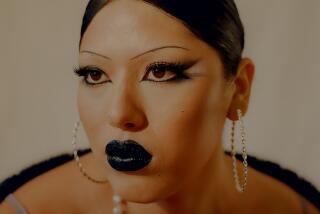Getting the Bugs Out
- Share via
Eight-year-old Samantha walks begrudgingly through the door. For the next hour or so the Tarzana girl will sit in a tall bamboo chair at Hair Fairies, a salon on trendy 3rd Street in Los Angeles near the Beverly Center.
But she’s not there for a trim, a tint or even kicky braids. She’s there to be nit-picked. To have someone methodically section off and comb nearly every strand of hair in search of lice, those pesky, but not harmful, parasites that can take up residence in youngsters’ locks, no matter how clean.
As Samantha tosses her long dark blond hair forward, she sighs. “Oh, I wish I had my Gameboy, like last time. How long is this going to take?” she asks on this, her second of what will be three visits. Her mother had discovered the second-grader’s infestation while blow-drying Samantha’s hair.
“I called a friend in a panic,” says Samantha’s mother, Rikki, 42, “She told me to call the Hair Fairy.”
For $65 an hour, Maria Adaimy, 31, will search and destroy lice and their eggs--known as nits--from the scalp of anyone who might have had head-to-head contact with the infested. “Most children won’t sit for their parents, but they’ll sit for me,” Adaimy says. An average treatment requires three or four visits lasting about an hour a session.
Most children sit quietly in submission, their heads bowed as if in prayer for the whole ordeal to end. “About 70% of the kids are usually very cooperative,” Adaimy says. “The others cry and squiggle and are just miserable--mostly 3- or 4-year-olds.”
The parents often can be just as anxious, peppering Adaimy with such questions as: “Do lice jump or fly?” (“No,” she says.) “How did my kid get this?” (Hard to tell. “It’s like trying to track the common cold,” Adaimy says.) And most of all: “Why? Why? Why did this have to happen to us?”
“It’s an epidemic,” says Adaimy, who says she has not only treated L.A. clients, but their relatives visiting from England, Italy and Australia. “I sometimes think the entire planet has a problem with it.”
The infestations seem more prevalent in the fall, probably because that is the first of the schools’ routine head checks of students after the long summer months, when an infestation can get out of control. Anyone can get head lice, but children are more susceptible because they play closely together, providing the opportunity for hair-to-hair contact, which can spread the bugs.
Adaimy has tapped into a growing niche in the service industry. An estimated 12 million Americans get head lice each year, and experts say the lice are becoming more and more immune to over-the-counter and prescription shampoos. As a result, the business of nit-picking is on the rise. There are a handful of similar lice salons or clinics in the nation.
“[My service] is a luxury,” Adaimy says. “But even the most diligent parent can spend three months with the problem, and I can rid them of it in two weeks. It takes a trained eye.”
Adaimy started Hair Fairies--originally as a house-call business--about 21/2 years ago after reading about the need in the Wall Street Journal. She spent three weeks learning about lice at doctors’ offices and scouring medical journals and Web sites.
Since then her business has grown from 10 to 50 clients a week coming from the San Fernando Valley, Manhattan Beach and all cities in between. She also has student nurses from USC on call to nit-pick in a pinch.
Adaimy hopes that soon she will have five professional nit-pickers seeing clients on the hour--every hour from 8 a.m. to 7 p.m.--seven days a week.
“She should franchise,” says one Westwood mother of two elementary school-age daughters who were infested with thousands of nits. “Hair Fairies is a mother’s dream. I don’t think I could manage this myself. I would have been nit-picking day and night.”
But while parents are singing Adaimy’s praises, some public health officials are skeptical. Professional nit-picking, which can add up to hundreds of dollars, can be financially out of reach for most families, they say. Others worry that professional nit-pickers should be trained medically to be able to identify other problems of the scalp. And still others feel that the art of nit-picking shouldn’t be lost by parents.
“It’s important that families know how to take care of some of these types of things on their own,” says Karen Maiorca, director of nursing services for Los Angeles Unified School District. “Families
But it’s the overloaded and overworked parent that Adaimy believes will welcome her professional services, especially if she can get treatments covered by insurance.
“[Then] I can service all of Los Angeles,” she says, which can be important for an operation that banks on not having too much repeat business.
“Hopefully, we won’t have to see you again,” says one happy mother leaving the shop with her now lice-free 2-year-old daughter.


